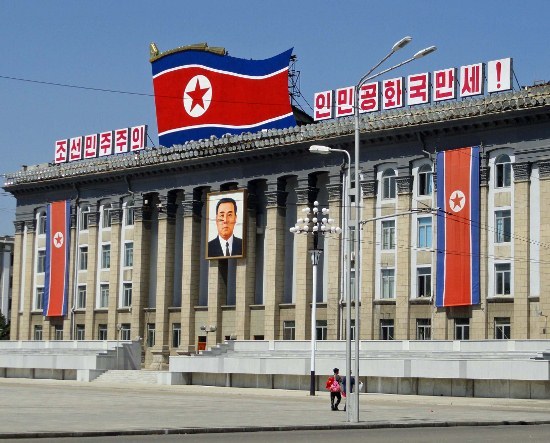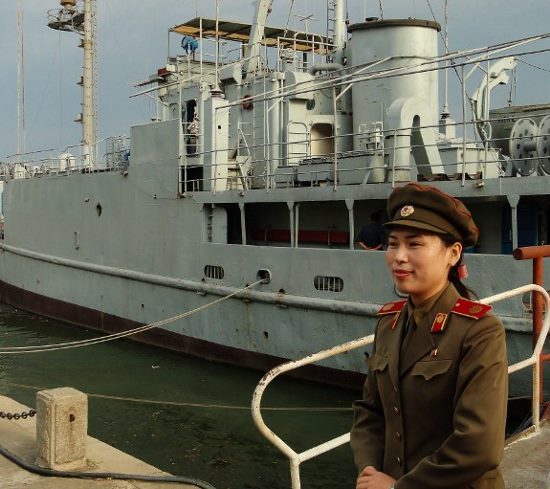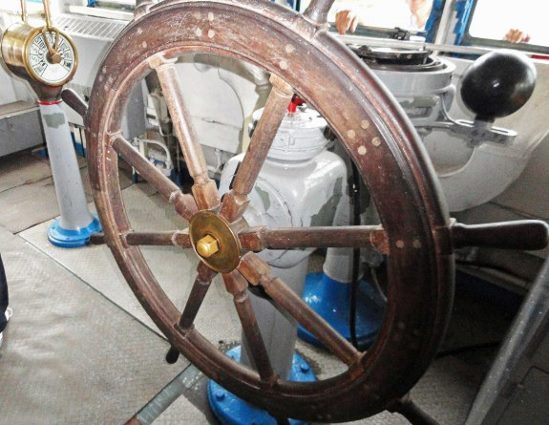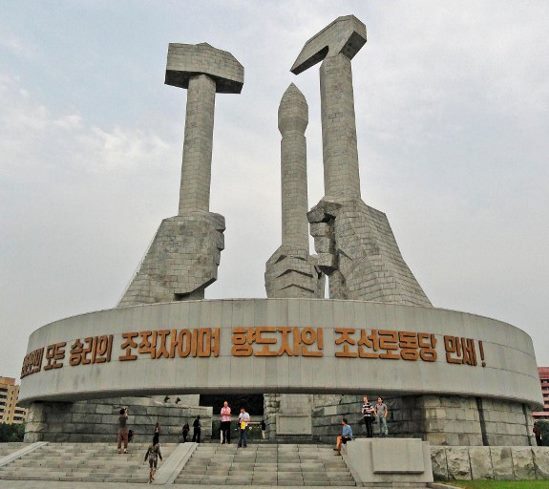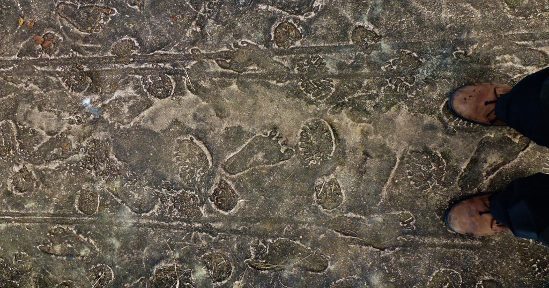From Michael -- North Korea has been in the news more than usual lately. They freed the American Korean War veteran they were holding hostage, only to follow that up with baby-faced Supreme Leader Kim Jong Un executing his uncle, considered the #2 man in the regime.
As we've been traveling around the world we visited North Korea, a sort of kitschy Stalinist holdover from the Cold War that is still mired in the past; a place where the Korean War could have happened only last week. We had a very different feeling in Vietnam, another Southeast Asian country with whom America fought, but has reacted very differently to that conflict.
The contrast between North Korea and Vietnam was made very clear based on two events that occurred only months apart in 1968: the Pueblo Incident and the My Lai Massacre.
In January 1968 the North Koreans captured the USS Pueblo, an American naval vessel that had been steaming through international waters as it monitored North Korean radio traffic. One crew member was killed during the capture while 82 others were held hostage for 11 months. The ship is still held in the DPRK, the only commissioned US naval vessel to be held by a foreign power. The incident is little remembered in the United States but in North Korea the ship is revered as a symbol of the small country's military might.
When we were in Pyongyang, the capital of North Korea, we visited the Pueblo. By all credible accounts the North Koreans attacked the barely-armed vessel with five ships and a pair of MiG fighter planes. The story we were told onboard was a bit different.
Our group was herded into the crew's mess where we watched a 15-minute propaganda video of the North Korean interpretation of the events. This consisted mostly of harangues against America and really grainy footage of President Lyndon Johnson looking demonic. What the video lacked in facts it made up for in rage and indignation.
We climbed on deck where the guide explained how the skirmish unfolded. According to the guide's retelling, the mighty Pueblo was captured by a mere eight North Korean soldiers who found the captain "quivering" under a table.
We had been warned before entering North Korea that we were not to point out to the hosts that their interpretation of historical events was different from ours. If we did the tour would come to an abrupt end and, besides, we weren't going to convince them anyway. The facts as they knew them had been drilled into them for years -- since birth really.
One member of our group, Jeff, developed a finely honed knack for asking questions in such a subtle way that showed he wasn't buying it. He asked innocently, "How did only eight soldiers capture eighty-three Americans and a Navy ship?" The guide responded in all sincerity, "They were very brave."
One of the sad things that the tour of the Pueblo revealed was how much the North Koreans cling to the past. The incident looms large in the country's history and is put forth as an example of the superiority of their political system.
At one time "Remember the Pueblo" was a rallying cry in the United States. Today I bet 95 percent of Americans who were born after the Pueblo Incident aren't even aware of it; but to the citizens of North Korea this minor clash that occurred over forty years ago is a major victory in their country's history.
We had a very different reaction in Vietnam, where I visited the sight of the My Lai massacre. In March 1968 (only two months after the capture of the Pueblo) a company of American soldiers entered the South Vietnamese hamlet and killed over 400 civilians.
The village has been recreated to look as it did that day after the soldiers left it. Thatched huts are burned out and the muddy paths through the rice paddies have been rebuilt from brown concrete. Before the concrete hardened, bare footprints of men, women and children being dragged to their deaths were placed in it to represent the killing frenzy that occurred here. These footprints were interspersed with the impressions of thick Army boots. It's a heartbreaking place to visit.
As I stood in the hamlet, contemplating what happened that fateful day, a multi-generational family of Vietnamese walked up to me. Their ages ranged from 6 to 76, and were representative of the people killed 45 years ago. A teenaged girl who spoke English approached me and asked where I was from. Considering where I was standing I hesitated and said, "America."
Their reaction surprised me. After the girl relayed my answer the family surrounded me, taking turns shaking my hand and repeating, "U.S.-Vietnam friends now. U.S.-Vietnam friends now."
The Pueblo Incident and the My Lai Massacre; two tragedies that occurred only two months apart. Yet the reaction of the two countries today is so different. Vietnam is a forward seeking country that doesn't wallow in the past. Things are moving too quickly there to let old grudges fester.
Meanwhile the totalitarian North Korean regime uses events like the Pueblo Incident to prop up the regime; to scare their people into believing that an attack is imminent. It's why they held an 85-year-old American hostage. Anything that supports their storyline that it's "North Korea against the world" helps those in charge. Until they focus more on the future, things will never change in North Korea; but that's how the ruling regime likes it. For them, change is not good.
For us, traveling to North Korea and Vietnam revealed so much more about those countries and their people than we could get by reading about them. To better understand a place it's valuable to go there and take a peek behind the curtain.
For more stories from North Korea, Vietnam and around the globe visit us on our blog at Changes in Longitude.
